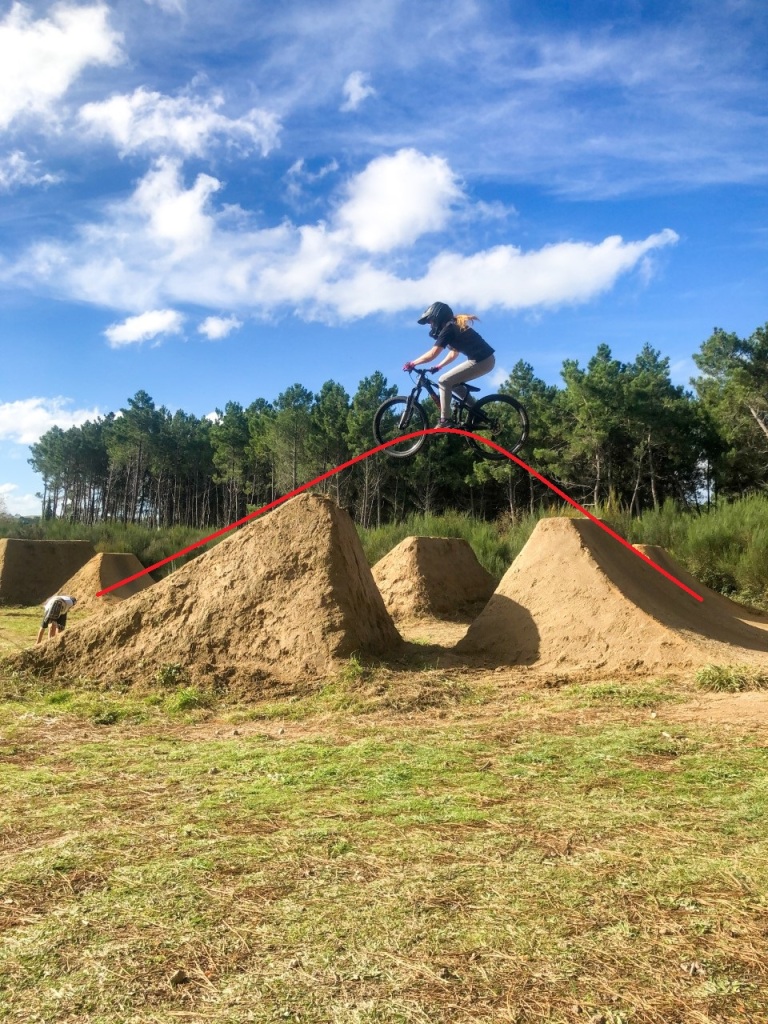The Joy of Dirt Jumps: A Parent’s Guide to Safe and Fun Riding for Kids
Welcome to the world of dirt jumps, where the thrill of two wheels and the freedom of the outdoors combine to create an exciting sport for children of all ages. This ultimate guide is here to help you as a parent confidently steer your young rider through the exhilarating journey of dirt jumping. Let’s start with an important primer on what dirt jumping is all about and how you can ensure a safe, joyful experience for your child.
What Are Dirt Jumps?
Dirt jumps are specially constructed mounds of earth designed for bicycles. They come in various shapes, sizes, and difficulties, intended to launch riders into the air as they ride over them. From small rollers to large gap jumps, they provide a playground for cyclists to develop their skills, coordination, and confidence. Dirt jumping isn’t just about catching air; it’s an art that emphasizes control, timing, and style.
Fostering Your Child’s Passion Safely
As parents, our primary concern is our child’s safety. When kids show interest in a sport as thrilling and potentially risky as dirt jumping, it’s vital to approach it with the right mix of support and caution. Here’s how you can do that:
- Proper Equipment: Invest in high-quality protective gear. This includes a certified helmet, knee and elbow pads, gloves, and appropriate footwear. This gear is your child’s first line of defense against the inevitable tumbles that come with the territory of learning.
- Age-Appropriate Jumps: Not all jumps are suitable for all ages. Start with small, rollable features that allow your child to get the feel of the terrain without the risk associated with more significant, more complex jumps.
- Supervised Practice: Always be there to supervise sessions, especially in the early stages. Not only will you be there to assist in the event of a mishap, but you will also witness your child’s progress, helping to build their confidence and celebrate their achievements.
Understanding the Local Dirt Jump Scene
Dirt jumps can be found in various locations, from community bike parks to secluded trails. Here’s a quick guide on finding and engaging with the dirt jumping community:
- Community Bike Parks: Many urban areas have dedicated bike parks with dirt jump sections. These are often the best starting point as they are designed with safety in mind to cater to differing skill levels.
- Local Clubs and Groups: Joining a local cycling club can provide a structured, social environment for your child to learn and grow. Experienced riders can offer advice and encouragement to your little one.
- Respecting the Space: Dirt jumping spots are often maintained by community members who invest time and effort into their creation and upkeep. Teaching your child to respect these spaces and contribute to their maintenance can instil a sense of responsibility and community spirit.
Starting Technique: The Foundation of Future Masters
Before attempting their first dirt jump, children must learn the basics of riding technique, including:
- Bike Handling: Practice on flat ground with exercises that boost balance and control.
- Basic Maneuvers: Start with simple skills such as bunny hops and manuals, which are essential for navigating jumps later on.
- Pump Tracks: Pump tracks offer a more controlled environment to practice the flow and rhythm essential in dirt jumping without the intimidating height of jumps.
As your child’s skills improve, gradually introduce them to larger features, always emphasizing the importance of patience and progress at their own pace. This helps to build both competence and confidence, a combination that is key to safe and successful dirt jumps.
Riding dirt jumps is not just about the physical skills; it’s about decision-making, risk assessment, and, importantly, knowing one’s limits. Encourage your child to listen to their intuition about what’s too challenging or unsafe and to never feel pressured to keep up with more experienced riders.
Please stay tuned for the upcoming segments of our guide, where we will provide detailed insights into advanced jumping techniques, how to create a supportive community for your child’s passion, and understanding the progression path to ensure a long-lasting, injury-free enjoyment of the sport. Remember, dirt jumping is more than just a sport; it’s a pathway to resilience, perseverance, and boundless joy. Let’s nurture those wheels in the right direction together!

5 Essential Preparations for Parents Before Venturing into Dirt Jumps
If your child is raring to hit the dirt trails and soar over jumps, it’s important to ensure they—and you—are well-prepared for this exciting adventure. Here are five key preparations to make:
1. Learn the Lingo and the Land
Understanding the terminology and different types of dirt jumps can be incredibly helpful. Terms like ‘tabletop’, ‘step-up’, ‘double’, and ‘berm’ are common in the dirt jumping community. Familiarizing yourself with these will not only help you communicate with your child about their experiences but also with other riders and parents.
2. Safety First: Inspect and Expect
Before any wheels leave the ground, make a habit of inspecting the gear and the jumps. Check for any damage to the protective equipment and ensure the bike is in proper working order. When it comes to the jumps themselves, look for any irregularities or hazards in the park or trail and report them if necessary.
3. Embrace the Learning Curve
Dirt jumping is a skill that takes time to master. Understand that your child will fall, and that’s perfectly okay—it’s part of the learning process. Encourage your child to start small and emphasize the importance of practicing fundamentals before attempting more complex jumps.
4. Support Systems: Community and Coaching
Seek out coaches or experienced riders who can impart wisdom and techniques to your aspiring jumper. The dirt jumping community is often very welcoming; by involving yourself and your child, you can tap into this supportive network for both guidance and camaraderie.
5. Establish Communication and Check-Ins
Set up clear lines of communication with your child about their comfort levels, fears, and goals. Regular check-ins before, during, and after practice sessions will help you assess their mental and physical state, ensuring they’re both enjoying themselves and not pushing too far too fast.
With these preparations in place, you’re better equipped to nurture your child’s dirt jumping pursuits safely. Remember, this is a journey that you’re on together, and it’s one filled with potential learning experiences and opportunities for growth for both of you. Let’s pump those tires, strap on a helmet, and embrace the dirt jump park with confidence and excitement!
SEO keywords: dirt jumps, safety gear, bike handling, riding technique, dirt jump community, learning curve, proper equipment, age-appropriate jumps, local bike parks, pump tracks, beginner tips, supportive community, dirt jump types, protective equipment, bike inspection.
Ready to Publish on Your WordPress Website:
This comprehensive guide has been optimized for search engines, catering to keywords related to dirt jumps, and is structured for an engaging user experience. With useful insights on safety, beginner techniques, and community involvement, this article is primed for publication on your WordPress website, ready to connect with parents keen on supporting their child’s dirt jump adventures.
. For more information see here
Disclaimer
The articles available via our website provide general information only and we strongly urge readers to exercise caution and conduct their own thorough research and fact-checking. The information presented should not be taken as absolute truth, and, to the maximum extent permitted by law, we will not be held liable for any inaccuracies or errors in the content. It is essential for individuals to independently verify and validate the information before making any decisions or taking any actions based on the articles.




